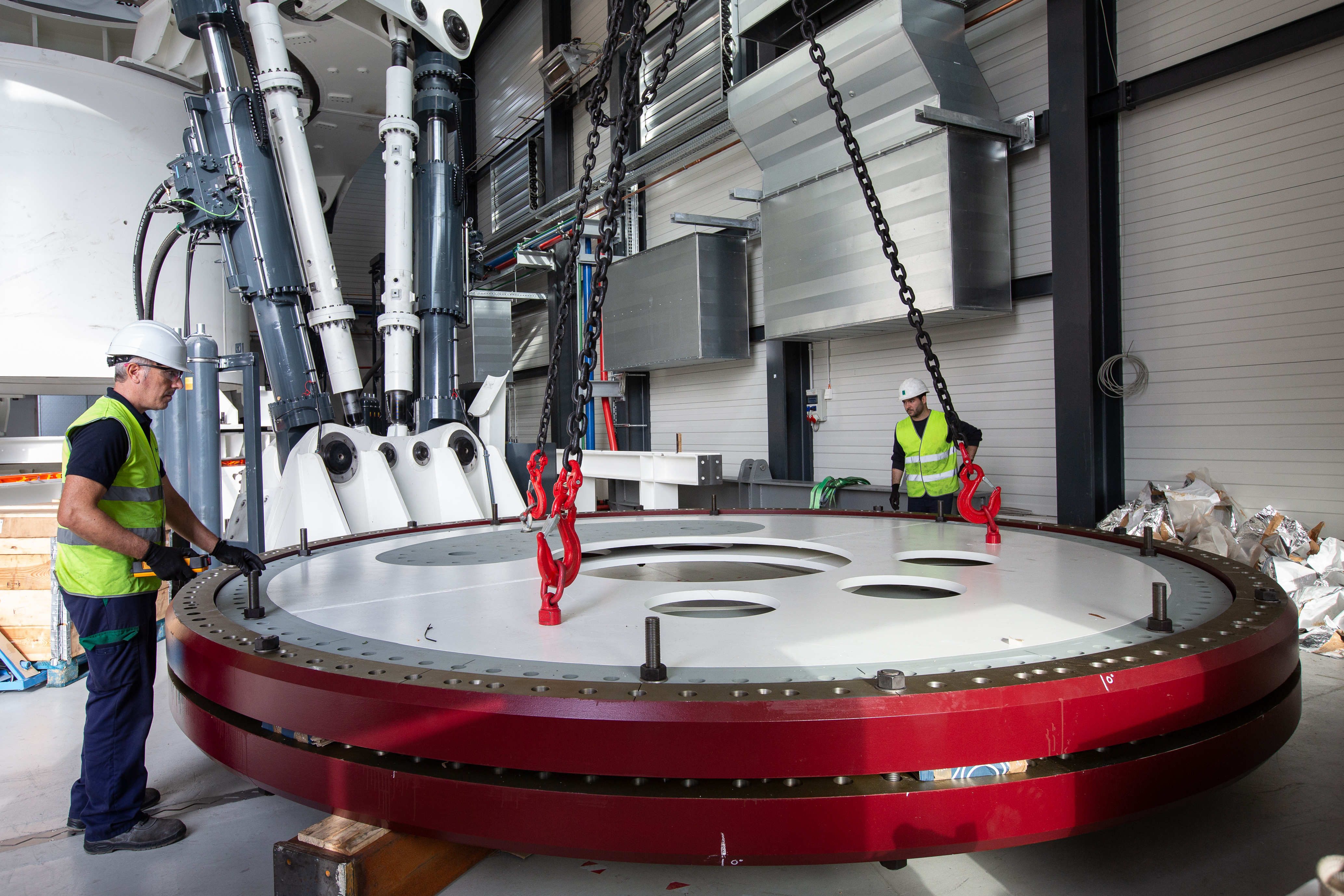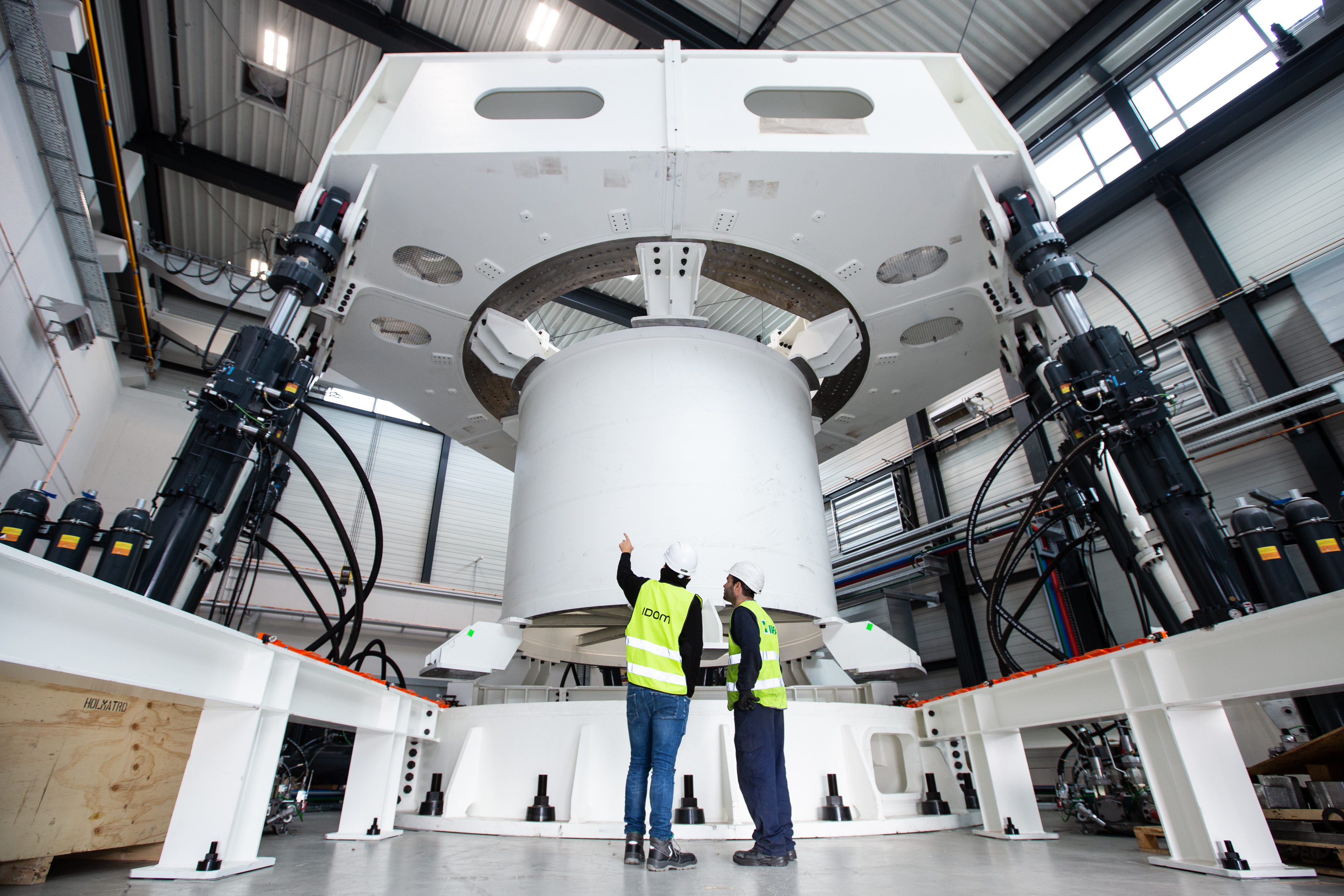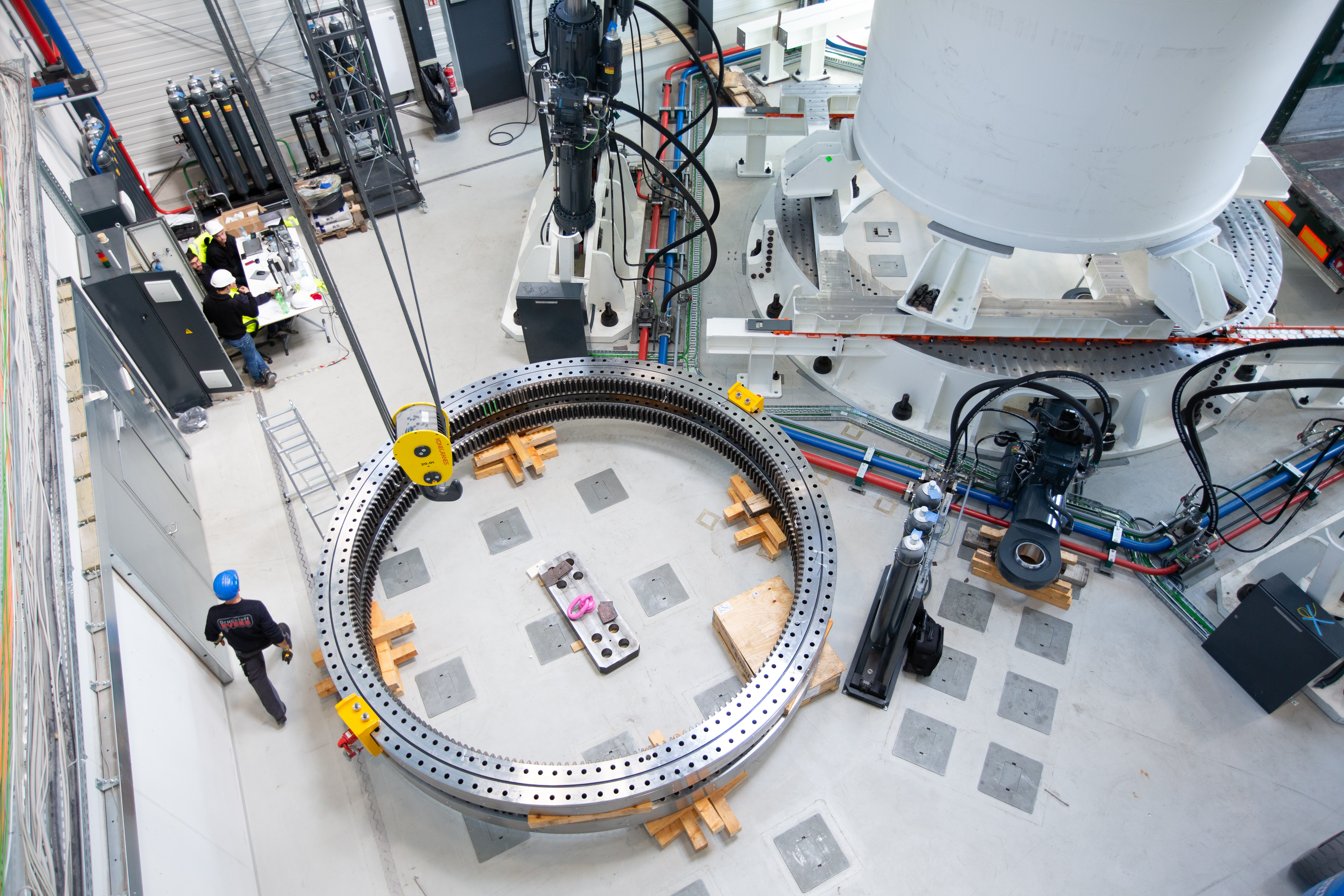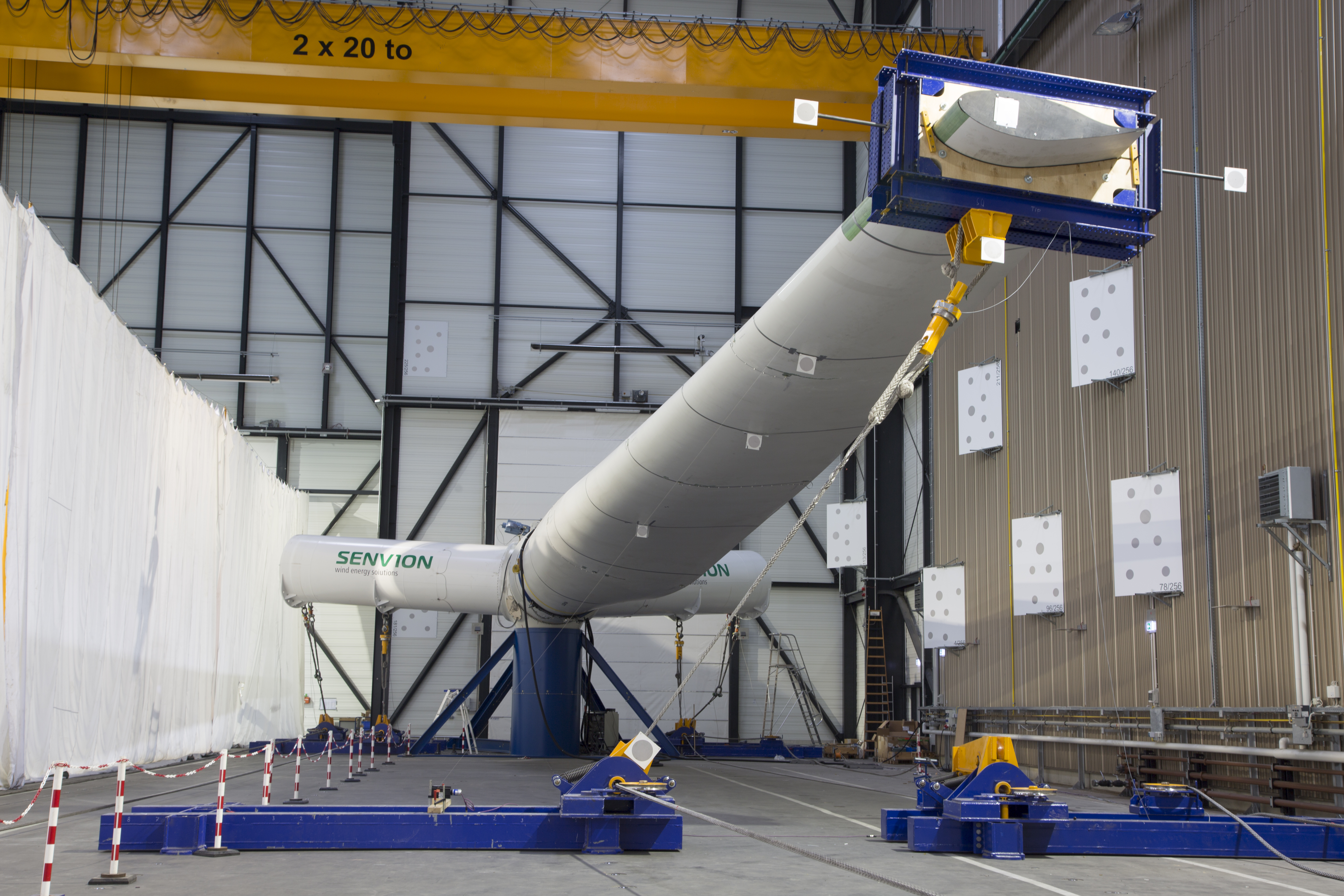Rolling bearings have a very long service life in most industrial applications. Since the first attempts were made at the beginning of the 20th century to calculate this life, the methods have been refined further and further and are considered to be very accurate for standard applications. The conditions under which rolling bearings of wind turbines are used differ considerably from this, however: high stochastic loads, continually changing rotational speeds, and interfaces with complex stiffness profiles increase the probability of failure and lead to a situation where failures are not unusual long before the end of the calculated fatigue lifetime. Phenomena which cannot be calculated, such as “white etchin cracks” in the bearings of the gear stages and in the generator often lead to problems, in wind turbines especially.
The certification authority currently does not require a service life calculation for oscillating rolling bearings as are used for the rotor blade bearing; methods used to date cannot be applied reliably. Standstill marks (false brinelling), ring fractures, contact corrosion, core failure, and wear and tear, are therefore typical examples of occuring damage mechanisms.




